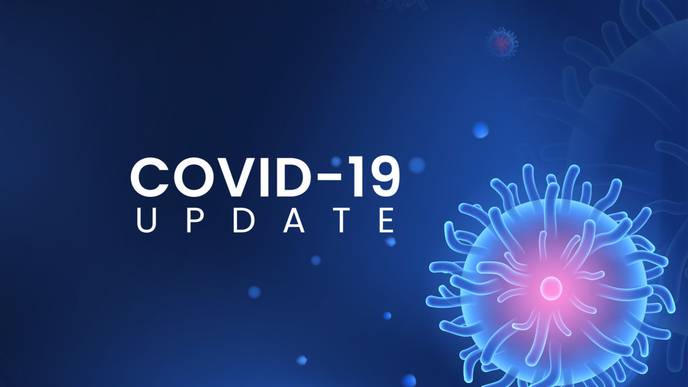ReachMD
Be part of the knowledge.™Study Reveals HDL-C & Ferritin as Crucial Markers for Long COVID-19 Severity, Leading to Novel Treatment Strategies

image: Professor Marvin Edeas, founder of the World Mitochondria Society.
Credit: World Mitochondria Society
Long COVID-19, or post-acute sequelae of SARS-CoV-2 infection (PASC), is a global health phenomenon characterized by persistent symptoms following the acute phase of COVID-19. Affecting millions worldwide, it leads to sustained healthcare needs and impacts workforce participation due to symptoms such as fatigue and cognitive impairments. The condition highlights the necessity for ongoing research, healthcare system adjustments, and the formulation of targeted treatments to address its prolonged effects on individuals and economies.
A recently published study in Clinics Journal (Elsevier) has shed light on significant metabolic changes in non-vaccinated individuals with Long COVID-19, offering key insights into disease severity. This study was led by Marvin Edeas, MD, PhD, Université de Paris, Institut Cochin, INSERM 1016, France, and a team of international researchers led by Jumana Saleh, PhD, Sultan Qaboos University Hospital, Oman.
Published under the title “Reduced HDL-cholesterol in Long COVID-19: A Key Metabolic Risk Factor Tied to Disease Severity”, the study examined 88 patients across varying degrees of initial disease severity (mild, moderate, and severe) compared to a control group comprising 29 healthy individuals.
Findings from the controlled study revealed major metabolic shifts, particularly a substantial reduction in HDL-cholesterol (HDL-C) levels, coupled with a twofold increase in ferritin levels and insulin resistance among severe Long COVID-19 cases, compared to milder cases and the control group. These metabolic markers emerged as leading predictors of disease severity, offering novel understandings of Long COVID-19 management and treatment.
Marvin Edeas explained, “Our research has, for the first time, established a direct correlation between HDL-C and ferritin levels and the severity of Long COVID-19. The decline in HDL-C levels and the rise in ferritin levels observed in patients, influenced by the severity of the initial infection, could potentially play a role in the persistence and progression of Long COVID-19 symptoms”. This study is critical in understanding Long COVID-19 and its long-term impacts on metabolic health.
The research findings suggest that HDL-C and ferritin levels could serve as crucial markers and therapeutic targets, opening new avenues for treatment strategies aimed at mitigating the long-term effects of the disease. By considering these metabolic markers, we can shape preventive strategies and significantly mitigate the long-term impacts of COVID-19 on patients’ health.
The Function of HDL-C in Immune Response Modulation
The observed correlation between diminished levels of HDL-cholesterol (HDL-C), the severity of COVID-19, and its prolonged course might be explained by HDL-C's function as a modulator of the immune response. This includes its roles as an anti-inflammatory, antioxidant, and antiatherogenic agent, particularly vital during the heightened inflammatory response triggered by the virus. Investigating HDL-C’s utility beyond its conventional role in cholesterol transport is crucial for a comprehensive understanding of COVID-19 and its secondary health effects, such as long-COVID.
Implications of Lipid Remodeling During SARS-CoV-2 Infection
Extensive research indicates that COVID-19 precipitates notable shifts in the host's lipid metabolism, leading to the accumulation of cellular lipid reserves. These alterations aid in the viral takeover of host cellular mechanisms, thus facilitating the progression of the infection. This theory gains support from laboratory evidence showing the cessation of viral replication upon the administration of small molecule lipid inhibitors, highlighting the critical dependence of the virus on host lipid resources for replication.
The Interrelation of Iron Dysregulation, HDL-C, and Ferroptosis in COVID-19
A notable aspect of the interplay between HDL-C functionality and iron homeostasis is the process of ferroptosis, induced by lipid peroxidation and disturbed iron balance, characterized by the buildup of iron and products of lipid oxidation. This leads to diminished antioxidant defense capabilities. HDL-C is influential in mitigating the detrimental effects associated with ferroptosis, underscoring the significance of maintaining balanced iron levels in COVID-19 management.
"Our findings highlight the exacerbating effect of impaired iron regulation on COVID-19 progression, further complicated by the disrupted protective functions of HDL-C", stated Jumana Saleh.
The Dynamic Competition Between Host Metabolic Processes and Viral Interference
The outcome of the "war", between the host's metabolic defenses and viral invasion strategies, axes on the control over iron and lipid resources. The virus strategically targets these metabolic reserves to support its replication and spread. For Marvin Edeas, this battle underscores the complex interaction between host metabolic pathways and viral mechanisms, emphasizing the strategic importance of iron and lipid regulation in determining the course and outcome of COVID-19 infection.
How does the strategic alteration of iron and HDL-C levels by a virus contribute to its underlying aim of targeting mitochondria to disrupt host defense mechanisms? Marvin Edeas, founder of World Mitochondria Society, commented on the perspective of this study.
"In the intricate dance of viral infection, the virus employs a calculated strategy aimed directly at the heart of the host's cellular energy and defense systems — the mitochondria. By subtly manipulating and altering the host's iron metabolism and HDL-C levels, the virus orchestrates a multifaceted attack designed to undermine mitochondrial integrity and function. This strategic disruption serves to weaken the mitochondria, a crucial step in the virus's broader aim to compromise the host's ability to mount an effective defense. Through this sophisticated mechanism of action, the virus ensures its survival and proliferation within the host, highlighting the importance of understanding these viral tactics for the development of targeted therapeutic interventions".
The implications of this study are broad, providing a new understanding of Long COVID-19’s impact on metabolic health and laying the foundation for future research and therapeutic interventions aimed at improving patient outcomes.
Paper DOI: 10.1016/j.clinsp.2024.100344.
Press Contact:
World Mitochondria Society
mitochondria@wms-site.com
Article Title
Reduced HDL-cholesterol in long COVID-19: A key metabolic risk factor tied to disease severity
Facebook Comments